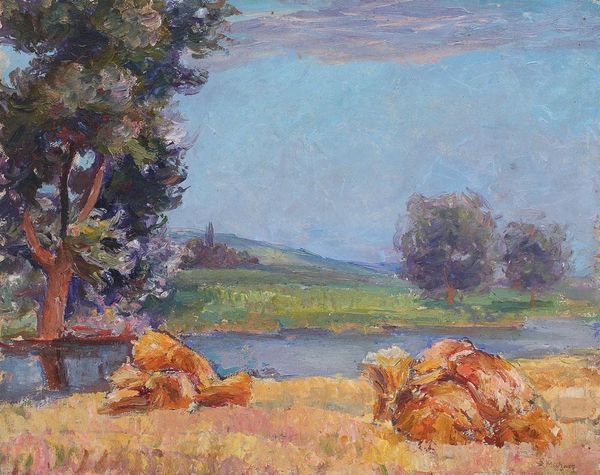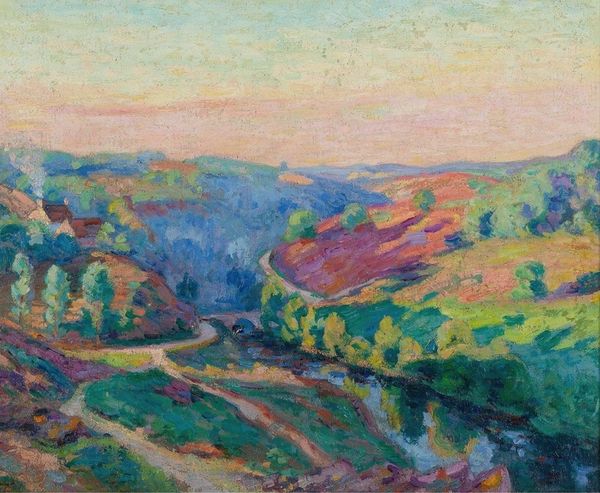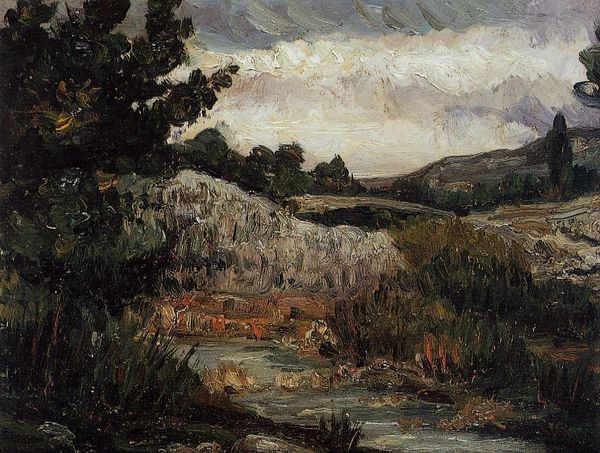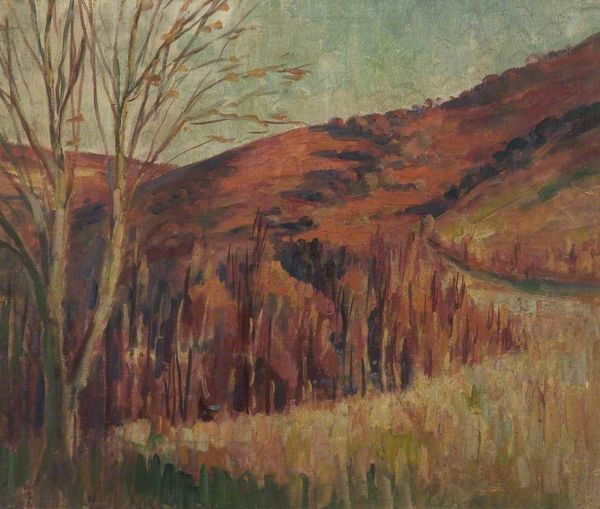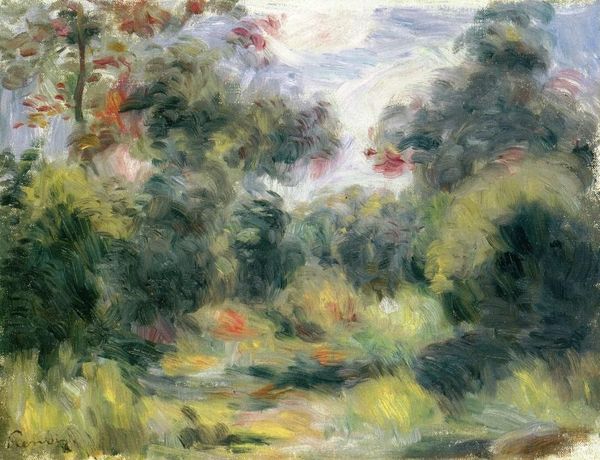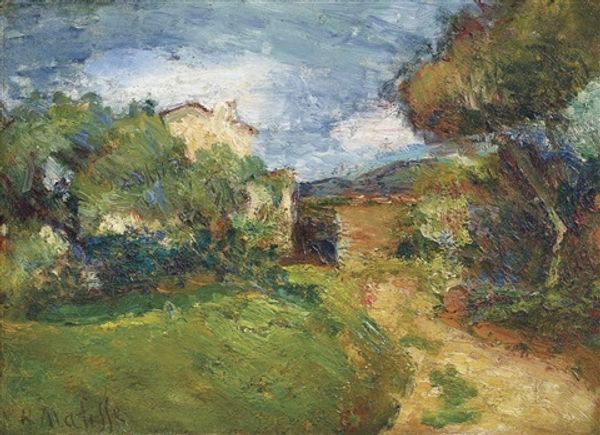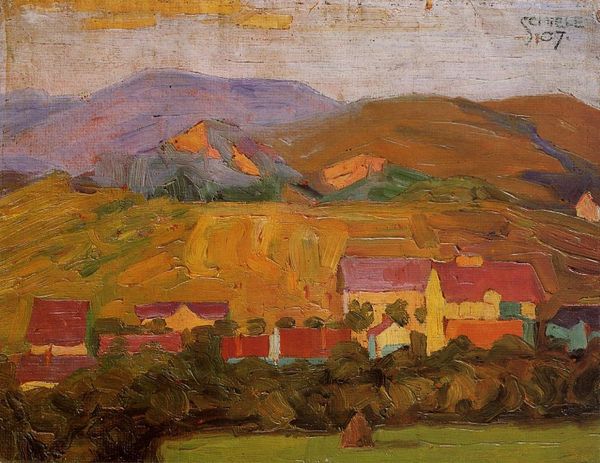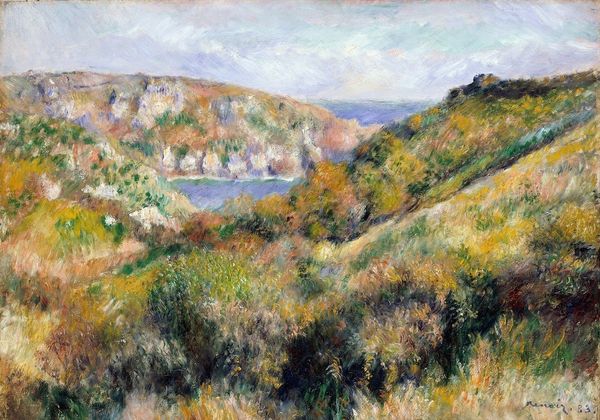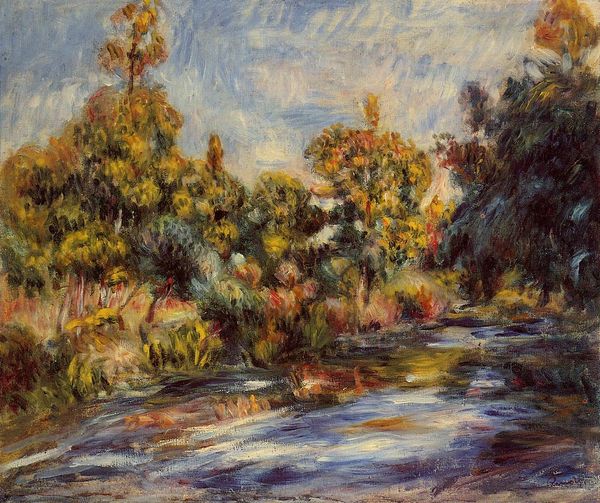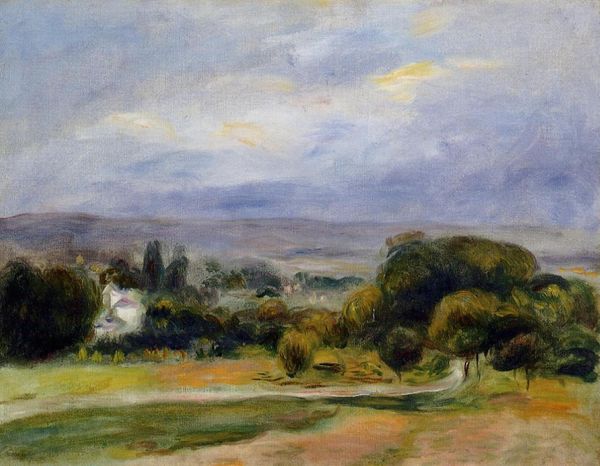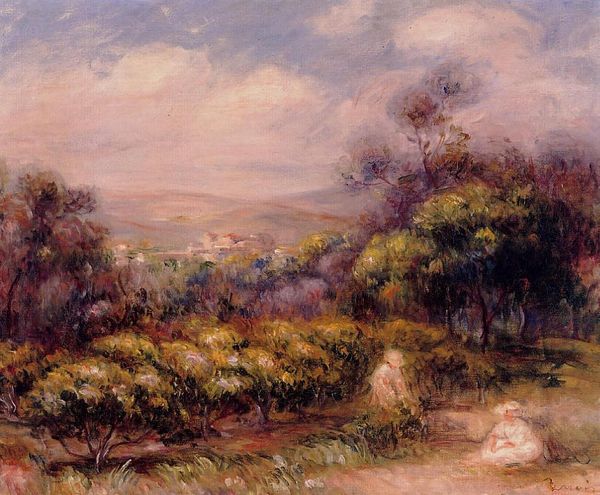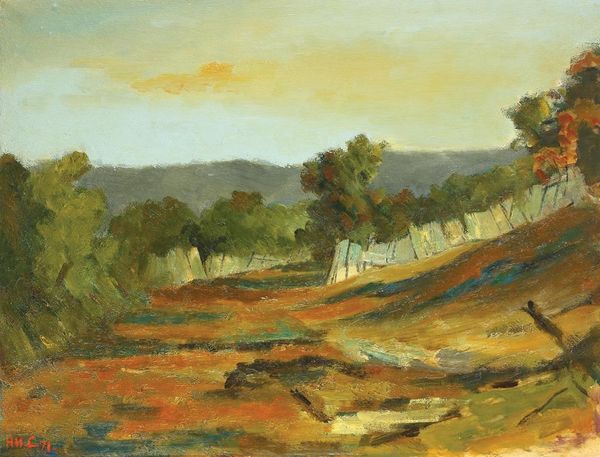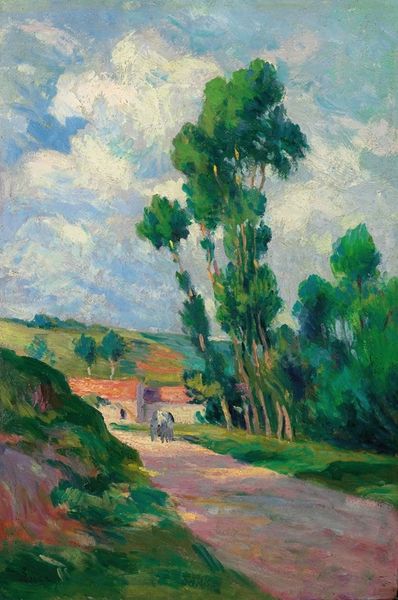
painting, plein-air, oil-paint
#
painting
#
impressionism
#
plein-air
#
oil-paint
#
landscape
#
impressionist landscape
#
oil painting
#
cityscape
Copyright: Public domain
Curator: Welcome. We're standing before "The Hills of Cagnes," a work attributed to Pierre-Auguste Renoir. What strikes you about this oil painting? Editor: The colors are muted, almost hazy. It’s serene, but there’s an underlying restlessness in the brushstrokes—a premonition of something…perhaps a societal shift? Curator: Interesting observation. Indeed, it captures the atmosphere with the spontaneity and light so characteristic of the Impressionist movement. Editor: I appreciate how Renoir subverts the conventional landscape. There's no clear focal point; your eye drifts across the canvas, much like lived experience, and you gain a perspective on class relations. Curator: The "plein-air" technique lends itself to capturing those immediate impressions, doesn't it? Editor: Absolutely, but I can't ignore that even landscapes can reflect power dynamics. The lack of identifiable figures raises questions of representation and visibility. Who is missing from this scene, and why? Curator: That’s a good question to be asked while taking the broader historical context into account. Art in the public sphere invariably engages in questions surrounding societal dynamics. The impressionists frequently chose bourgeois leisure activities as subject matter and the increasing accessibility to industrialized paints freed up possibilities in terms of both the aesthetic choices as well as the means to market the art. Editor: Yet this focus often excludes the working class. By omitting them, the narrative subtly reinforces the status quo. The art world should really serve to recognize our complicity in the dynamics of societal representation and address this exclusion. Curator: It’s a valuable point to ponder, particularly how visual choices might reflect broader social invisibilities, but I think Renoir intended primarily to study of the effects of light and color. Editor: And maybe that's part of the problem! Escapism itself can be a form of political commentary, whether intentional or not. I appreciate that you draw a focus on socio-historical events in that light. It is the public role of art we are considering here, in that light, and not merely color itself. Curator: Thank you for this stimulating insight! Editor: Likewise, your perspective is illuminating; now I see even greater significance within the work.
Comments
No comments
Be the first to comment and join the conversation on the ultimate creative platform.
